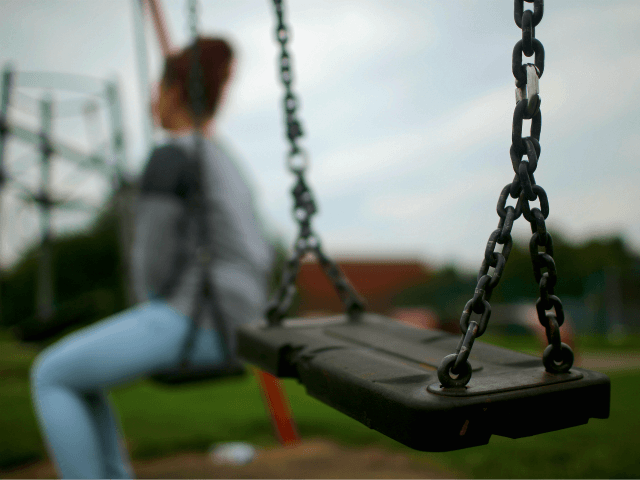A new report from the Centers for Disease Control and Prevention (CDC) finds, after a period of stability between 2000 and 2007, the suicide rate among children and adolescents aged 10-24 increased 56 percent between 2007 and 2017.
The report shows the homicide rate for the same age group was also stable between 2000 and 2007, then dropped 23 percent from 2007 to 2014 and then increased 18 percent between 2014 to 2017.
“For persons aged 10-14, suicide rates increased from 2007 to 2017, while homicide rates declined,” state the authors of the report, Sally Curtin and Melonie Heron, continuing the breakdown for the other age subgroups:
Suicide and homicide death rates for persons aged 15–19 have increased recently during 2000–2017, from 2007 to 2017 for suicide and from 2014 to 2017 for homicide.
Suicide death rates for persons aged 20–24 increased from 2000 to 2017, and homicide rates increased from 2014 to 2017.
#Suicide rate for U.S. adults aged 20-24 increased 36% from 2000 (12.5) to 2017 (17.0) https://t.co/HwnrGwgmcZ pic.twitter.com/vx9SZlHR9x
— NCHS (@NCHStats) October 17, 2019
#Homicide rate for U.S. adults aged 20-24 declined 24% from 2000 (16.0 per 1,000) to 2014 (12.1) and then increased 15% through 2017 https://t.co/HwnrGwgmcZ pic.twitter.com/MrMKpAaVn1
— NCHS (@NCHStats) October 17, 2019
The authors note that, in 2017, “suicide was the second leading cause of death for persons aged 10–14, 15–19, and 20–24, and homicide ranked third for persons aged 15–19 and 20–24 and fifth for persons aged 10–14.”
Suicide rates ended up surpassing homicide rates for the entire group aged 10-24 during the latter part of the period between 2000 and 2017.
In 2000, the homicide rate for the age group was 8.7 per 100,000 persons, while the suicide rate was 7.2 and continued to be higher until 2009. However, in 2017, the suicide rate was 10.6 and the homicide rate was 7.9.
#Suicide rate for U.S. adolescents aged 15-19 increased 76% from 2007 (6.7 per 1,000) through 2017 (11.8) https://t.co/HwnrGwgmcZ pic.twitter.com/1N4hp3I1Nm
— NCHS (@NCHStats) October 17, 2019
#Homicide rates for U.S. adolescents aged 15-19 increased 32% from 2014 (6.6 per 1,000) through 2017 (8.7) https://t.co/HwnrGwgmcZ pic.twitter.com/gHH4UAklue
— NCHS (@NCHStats) October 17, 2019
The authors summarize:
For persons aged 10–14, suicide rates began increasing in 2010, whereas the homicide rate declined during the 2000–2017 period. In contrast, recent increases were observed for both suicide and homicide death rates among persons aged 15–19 and 20–24, with the increases for suicide rates beginning earlier than for homicide rates. In addition, for persons aged 15–19 and 20–24, suicide rates surpassed homicide rates during the latter part of the period.
In 2017, the #suicide rate for U.S. children aged 10-14 was more than twice the #homicide rate (2.5 per 1,000 compared with 0.9) https://t.co/HwnrGwgmcZ pic.twitter.com/HzX7SLAvWD
— NCHS (@NCHStats) October 17, 2019
#Homicide rates for U.S. children aged 10-14 declined 18% from 2000 (1.1 per 1,000) to 2017 (0.9) in the United States https://t.co/HwnrGwgmcZ pic.twitter.com/GVSgMa5unR
— NCHS (@NCHStats) October 17, 2019
During NPR’s Morning Edition on Thursday, Curtin expressed concern, specifically, that “not only is suicide trending upward, but the pace of increase is actually accelerating.”
According to Medscape Medical News, Colleen Carr, MPH, director of the National Action Alliance for Suicide Prevention, said better suicide prevention efforts require further research to determine the causes of the increased rates of suicide among adolescents and young adults.
“It is important to recognize that suicide is not caused by one single factor but instead a range of factors that include mental health conditions, but also include important situational factors that many of us will experience in a lifetime — including social, physical, emotional or financial issues,” Carr said.

COMMENTS
Please let us know if you're having issues with commenting.